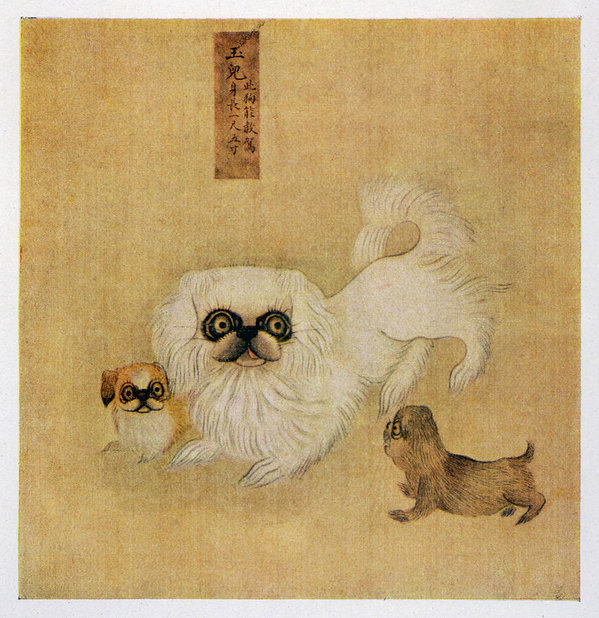
Far from being useless lap dogs, the Pekingese had specific purposes in the days of the Forbidden City in Imperial China. The dogs were companions, of course, and yes, they were used as accessories to compliment an imperial robe made up of a color significant to the ancient Chinese: Red represented summer, green was for wealth, harmony, and growth, and black was for winter. We know that the color of a Pekingese was important in this regard because of what was written in the last version of the ancient breed standard attributed to the Dowager Empress Tzu Hsi. Before her death in 1911, she wrote, in part:
“And for its color – let it be that of a lion, a golden sable, to be carried in the sleeve of a yellow robe – or the color of a red bear, or a black and white bear – or stripped like a dragon – so that there may be dogs appropriate to every costume in the Imperial wardrobe.”
Before we move away from garments, it’s important to remember that clothes revealed not only the wearer’s rank and status, but their marital status as well – all of which could be ascertained at a glance just by what was worn. Rules dictating garments were so rigid that the exact month, date and hour of changing one’s closet from winter to summer clothing was strictly outlined. The color of a Pekingese accompanying its owner, then, was not insignificant,
All that said, superficial purposes for the Pekingese ended there.
The smallest, most “prickly” tempered of Pekes would be inserted into the immensely wide sleeves of Chinese robes, and if the owner felt threatened, he or she would release the dog out their sleeve to attack and scare off the unfortunate fellow. The Pekingese Club of America vividly described these “Sleeve Dogs” as being, “the ancient Chinese version of mace.”
Chinese emperors also included the dogs as part of their entourage and would choose four Pekingese as bodyguards: Two to bark to announce his arrival, and other two to hold the hem of the emperor’s robe in their mouths.
Image: A White Pekingese Dog And Puppies as depicted in an Imperial Dog Book : Mary Evans Picture Library

Who knew? I would have thought the “sleeve Pekes” were the sweetest and most docile! Good thing I never offended a Chinese emperor.
Agreed! We’d say it’s a good thing that neither of us lived in societies that were so easily offended….wait, maybe we do?